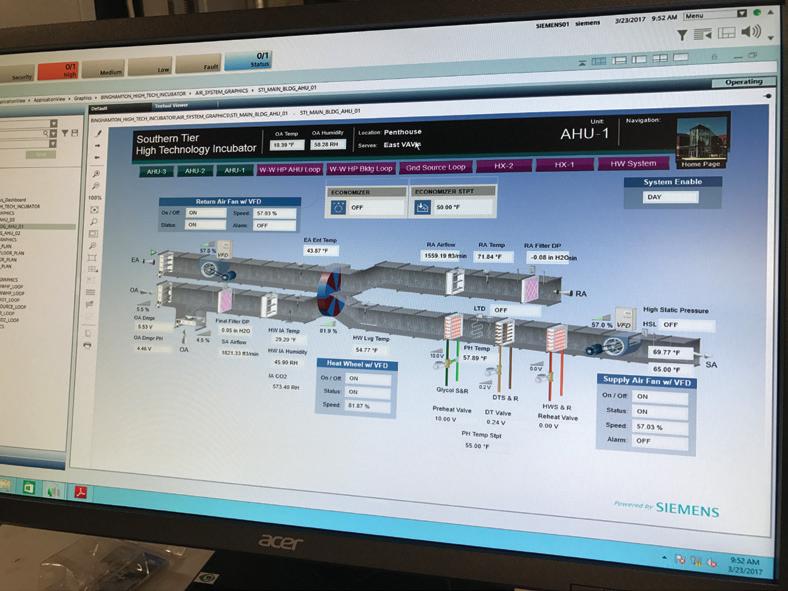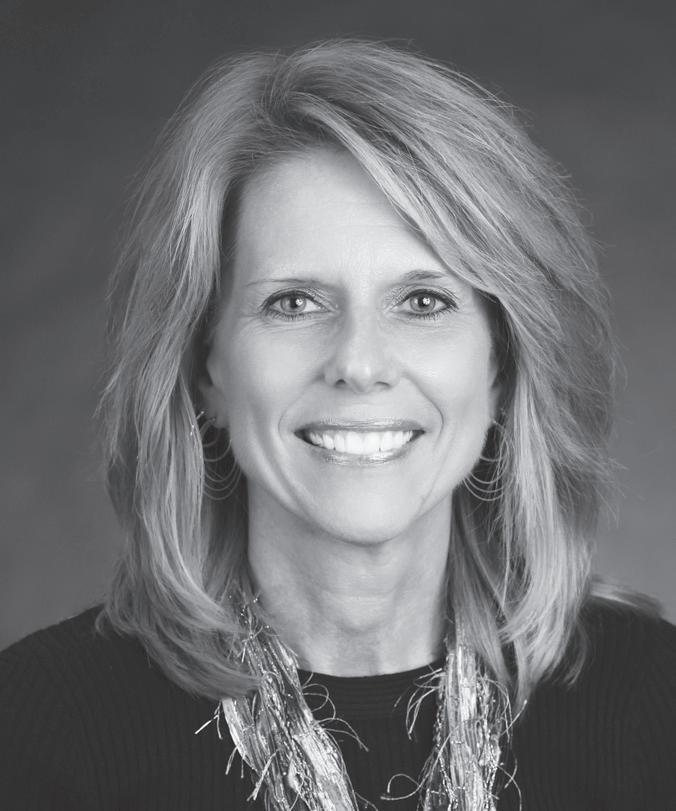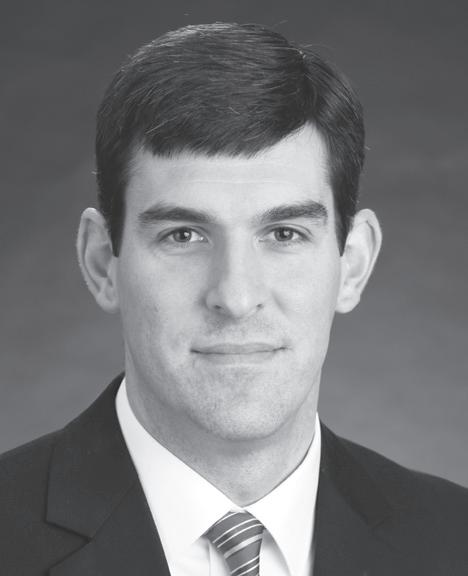
13 minute read
Science & Engineering Fairs
24
| The ROCHESTER ENGINEER JANUARY 2018 terra news
News From Professional Firms
Pathfinder Engineers & Architects has been selected by The American Council of Engineering Companies - New York for a 2018 Platinum Level Engineering Excellence Award for its design of the Koffman Southern Tier High Technology Incubator. Pathfinder provided high-performance mechanical, electrical, plumbing and fire protection engineering and enhanced commissioning for the building, which includes wet labs, dry labs and high bay space, providing a variety of space types to serve potential needs of start-up companies. The award will be presented at a New York City Gala in Spring 2018.
The new three-story, 35,000 sq. ft. facility, which opened May 2017, provides labs and shared facilities for start-up companies, providing resources and promoting growth until these companies are strong enough to graduate from the incubator. The Incubator offers invaluable mentoring in partnership with the Small Business Development Center, the Trade Adjustment Assistance Center of New York, New Jersey and Puerto Rico, as well as the Office of Entrepreneurship & Innovation Partnerships of Binghamton University.
The facility includes eight wet labs, 10 dry labs, one high space area, 22 offices, and a common area known as “the sandbox.” Tenants have access to any available space, admission to all events hosted by the Incubator, and the ability to book the conference or event room.
SYSTEMS DESIGN

The mechanical systems focus on minimum distribution system and maximum energy performance, with variable air volume control, heat/ energy recovery from exhaust, and very high efficiency equipment.

The system includes a high-efficiency geosource heat pump / boiler hybrid system with induction chilled beam units. The induction system comprises induction coil units in the occupied spaces integrated into the ceiling that heat and cool each space. Wet labs are provided with low flow fume hoods with VAV exhaust and pressurization control. Ventilation and make-up air is provided from three dedicated outdoor air systems (DOAS).

The large volume of outside air is the largest heating/cooling load in the facility, representing 60% of the total energy usage. Each DOAS unit is connected to the GSHP system and a 70% efficient energy recovery wheel, and has solar preheat in winter conditions.
The GSHP system benefits include a smaller boiler resulting in lower fossil fuel consumption and emissions, no cooling towers with chemical treatment, lower water consumption due to no cooling tower and lower operating and maintenance costs. The well-field includes 40 wells 450 ft. deep under the parking lot on this urban site.

Continued on page 26
news from professional firms JANUARY 2018 The ROCHESTER ENGINEER | 25
The laboratory HVAC system accounts for 60% of the total building HVAC energy usage, and the design provides for 43% energy recovery. The labs include 11 low fume hoods, pressure control to the corridors, and visual lab safety pressure indicators. The building is 41% more efficient than ASHRAE 90.1.
All electrical fixtures in the building are Energy-Star compliant and utilize natural lighting and occupancy sensors to the greatest extent possible to minimize electrical loads.
Two 250KW natural gas generators provide emergency and standby power. A laboratory standby power distribution system includes a UPS to ensure consistent power supply for critical laboratory experiments that cannot withstand the 10 second power outage between the utility power black-out and the generator power switch over.
HIGH PERFORMANCE RESULTS
Solar outside air preheating, or solar preheat, is not a new technology. Yet, when combined with high-performance systems, it can boost a building’s energy efficiency significantly. This project integrates a large solar preheat system integrated into the southern facade with the HVAC system – including energy recovery wheels in the DOAS air handling units and the GSHP system – to enhance energy performance.
The collector is perforated with tiny holes and painted a dark color to absorb maximum solar radiation. Solar radiation heats the air in the plenum, as the air is drawn through the collector and into the plenum by the DOAS air handling units.
On March 23, 2017, the Pathfinder Commissioning team tested the building’s heating systems. That day, at 9:30 a.m., the outside air temperature was 18 deg. F. The solar preheat wall raised the intake temperature to 29 deg. F and the energy recovery wheel further raised incoming air to 58 deg. F. Fan motor heat raised the discharge air to the space set point of 67 deg. F. The solar preheat wall and energy recovery wheel are fully heating this laboratory building on an extremely cold day with 6,200 CFM of outside air. No additional energy was required to heat the building.
SOCIO-ECONOMIC
The Incubator is located on an urban site in Downtown Binghamton, providing good proximity to the businesses and local government. The building orientation takes maximum advantage of solar orientation and allows space for future building expansion.
The layout of the labs allows business to expand or reduce their space size in alignment with their needs. Co-working space on all three floors encourages networking and collaboration among start-up companies and partners. The Sandbox on the top floor of the building facilitates innovation and idea-sharing among entrepreneurs.
The Incubator, which is expected to create hundreds of jobs over the next decade, was developed through the collaboration of many public and private entities. It is expected to generate a local economic impact of more than $6 million annually, and will provide high-tech infrastructure for up to 12 companies focusing on research and development in energy, microelectronics and healthcare.
Support came from: New York State’s Empire State Development Corporation, the Southern Tier Regional Economic Development Council, SUNY Broome, Broome County Industrial Development Agency, U.S. Economic Development Administration, the Binghamton University Research Foundation, with underwriting by the Koffman Family.
Pathfinder supported the requirements for a NYSEDC Grant for the project. A $6 million grant was provided and $3.7 million of that was allocated to the building construction for a total construction budget of $14.8 million.
TEAM
The design team was led by Ashley McGraw Architects, and included Ravi Engineering & Land Surveying for structural engineering, Jacobs Consultancy for laboratory consulting, and MJ Engineering for civil/site engineering. Construction was provided by Fahs Construction Company. q
26
| The ROCHESTER ENGINEER JANUARY 2018 news from professional firms
CampusNews
RIT professor among first to use James Webb Space Telescope during its inaugural run
Jeyhan Kartaltepe is one of the leaders of the Cosmic Evolution Early Release Science Survey
Rochester Institute of Technology astrophysicist Jeyhan Kartaltepe will be one of the first scientists to use NASA’s James Webb Space Telescope soon after it launches in spring 2019.
The Webb telescope is regarded by many as the powerful successor to the Hubble Space Telescope, with sensitive infrared detectors designed to peer 13.5 billion years into the universe’s history.
Kartaltepe, assistant professor in RIT’s School of Physics and Astronomy, is a leading member of the Cosmic Evolution Early Release Science (CEERS) Survey team selected as part of the James Webb Space Telescope Director’s Discretionary Early Release Science Program. It is one of 13 science teams that will use the $8 billion telescope first, conducting experiments during its initial cycle and testing the instruments’ capabilities.
The Cosmic Evolution Early Release Science Survey will use multiple instruments on the space telescope and test different observation modes. The international project consists of 105 astronomers from 10 countries, including 28 U.S. universities.
A decade in the making, the Webb telescope soon will be the most advanced and sensitive space telescope in operation. It will be positioned farther in space than the Earth-orbiting Hubble telescope and will carry a larger mirror (6.5 meters compared to Hubble’s 2.4 meters) and sensitive infrared detectors.
Kartaltepe’s research focuses on how galaxies have evolved from the early universe to today. As a team leader on the survey, she will spearhead data processing efforts for one of the instruments and measure detailed properties of galaxies and their nuclei in order to investigate star formation and the growth of supermassive black holes in the early universe.
The project will “demonstrate, test and validate extragalactic surveys in the near- and mid-infrared and inform the design of future James Webb Space Telescope surveys,” Kartaltepe said. Her research group, including RIT students and postdoctoral researchers, will conduct some of the first science investigations with this data set.
The larger astronomical community will have immediate access to the resulting observations. Kartaltepe anticipates that astronomers all over the world will use data products produced by the survey team in preparation for the next cycle of observations with the new telescope.
The Space Telescope Science Institute operates NASA’s James Webb Space Telescope, which was developed in partnership with the European Space Agency and Canadian Space Agency. The telescope is named after NASA’s second administrator. James Webb led the Apollo lunar exploration program and a space-science initiative that resulted in more than 75 launches. q
campus news JANUARY 2018 The ROCHESTER ENGINEER | 27
Professional Firms Employee News
Fisher Associates Announces New CEO
The once part-time employee rises to lead the engineering firm and targets growth beyond Rochester
Fisher Associates Board of Directors has elected Roseann Schmid as the company’s next CEO effective January 1, 2018. Schmid becomes the third CEO in the company’s 34-year history. The announcement is the centerpiece of a larger organizational leadership change that positions Fisher Associates to grow its portfolio of professional consulting services.

Schmid joined Fisher in 2007 as a part-time engineer. She has worked as a project manager in the transportation group, highway group manager, director of the transportation market sector and vice president. Schmid served on the company’s operations committee and was closely involved with the recent implementation of the company’s human resources information system. “Fisher Associates has provided me tremendous opportunity,” Schmid said. “I want to continue providing similar opportunities for our talented staff as we grow into a world-class professional consulting firm.”
The firm delivers planning, environmental, engineering, landscape architecture, surveying, and construction representation services for clients in the transportation, land development and energy sectors. They service a variety of clients throughout New York State and Pennsylvania from their New York based offices located in Rochester (headquarters), Syracuse, and Buffalo and their Pennsylvania based offices located in Erie and Canonsburg. Noteworthy projects on which Fisher Associates has worked include: the I-590/Winton
Road Diverging Diamond Interchange
(DDI) Project that improved the safety of this heavily traveled interchange with construction of the NY State’s first DDI; the National Award Winning
Centerway Bridge Rehabilitation
Project, which rehabilitated a deteriorated 92-year-old concrete
Roseann Schmid, CEO
earth-filled earth arch structure and enhanced this pedestrian bridge by converting the 40-foot-wide deck to a linear park. Beyond New York and Pennsylvania, Fisher Associates provides engineering, environmental, and survey services to renewable energy clients throughout the country. A notable recent project was completion of the civil engineering and environmental compliance monitoring on the Amazon Wind Farm US East – the first wind farm in North Carolina.
As CEO, Schmid plans to focus on new markets and services. “Growth is a priority for us, both geographically as well as services we offer. I’ll be looking for those next opportunities we should consider,” Schmid said. The board cited Schmid’s reputation within the industry and her extraordinary vision for the firm as factors that make her uniquely qualified to lead.
“Her strong combination of technical knowledge and communications skills is unique to engineers and contributes to her effectiveness as a leader,” said Robert Goossen, current CEO. Goossen recently announced his retirement, but will stay with the company for another three years to ensure a smooth
28
| The ROCHESTER ENGINEER JANUARY 2018
transition. He will serve as chief financial officer effective January 1, 2018 and will continue working closely with Schmid to oversee financial aspects of the business.
Goossen is proud that he is ceding the CEO role to a woman he hired a decade ago as a part-time project manager. He remembers pitching Schmid on the fact that she would be valued for her capabilities and would be given opportunities to grow. Her part-time status was not a concern. “Fisher Associates takes pride in promoting people based on their skills and drive to do more,” Goossen said. “Roseann being elected to CEO is proof of this. This philosophy is different than a lot of other firms who promote based on seniority. We have a lot of opportunities to offer that other firms don’t and we hope that this helps in attracting young talent.”

The board also elected Chris Smith as chief operating officer. Smith has been with the firm since 1994 Chris Smith, COO in various roles including traffic engineer, traffic and highway group manager, CI manager, director of energy, business development manager for renewables and energy, and director of marketing and business development. He has successfully and profitably managed projects across every market, service line and geography offered by the firm. Smith’s role as COO is effective immediately. q
professional firms employee news
Kamillah Ramos
Gregory Heinrich
Lee Oldfield
SWBR Hires Architectural Designers, Structural Engineer and Interior Designer
SWBR welcomes four new professionals to the firm: architectural designers Kamillah
Ramos and Gregory Heinrich, structural engineer Lee Oldfield, and interior designer
Amanda Olix Loomis.
Architectural designer Ramos earned her degree from the University at Buffalo and
spent a full semester abroad at Peking University, where she worked with Turenscape
Landscape Architecture. She credits composing oil paintings of the environment to her
initial interest in architecture and design. “I became thoughtful of how the landscape
could be manipulated using the same sort of eye for composition, color and creativity,”
she said. She is a member of Greater Rochester Plein Air Painters.
As architectural designer, Heinrich is part of the Workplace Studio team, where he’s
responsible for designing models and documents for the firm’s commercial and
industrial clients. He received a bachelor’s degree from Miami University in Oxford,
Ohio. When asked what meaningful design means to him, he said: “Meaningful
design goes beyond basic function to create spaces that are both efficient and inspire
the people who use them. By understanding the environmental, social and physical
contexts of each project, designers can create spaces that benefit both the user and
the client.” Outside of SWBR, Heinrich participates in 13thirty Cancer Connect.
Oldfield will serve as a structural engineer, specializing in mid-rise structures
across SWBR’s various studios, including college campus and industrial projects.
Prior to SWBR, he spent over two years at CHA Consulting and nearly four years at
Constellation Energy. He received a bachelor’s and master’s degree in civil engineering
from the University at Buffalo.
Most recently serving as interior design consultant at The Home Depot, Olix is
the newest interior designer at SWBR. She received a bachelor of arts in interior
design from the University of Kentucky and a masters of business administration in
entrepreneurship from Southern New Hampshire University. Olix volunteers with
Catholic Action Center and Hornell Humane Society. q
Amanda Olix Loomis
professional firms employee news JANUARY 2018 The ROCHESTER ENGINEER | 29






